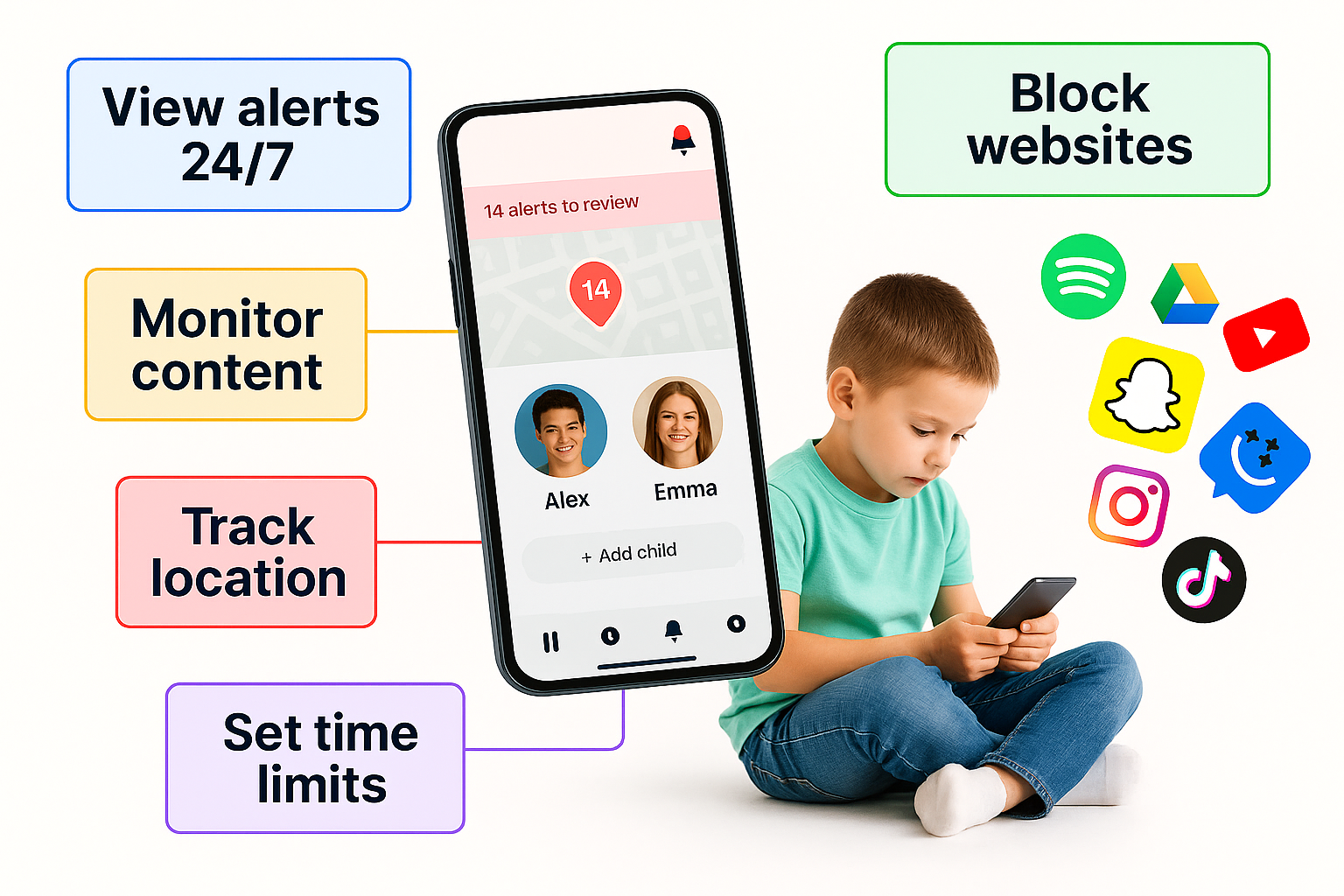5 Startling Statistics That Reveal What Kids Really Do Online
Parents often sense there’s unseen activity behind their children’s screens—but what does the data reveal? Here are five recent, eye-opening statistics that expose how kids use smartphones, what they prioritize, and why digital safety tools are essential.
Stat #1: Hours Spent on Social & Messaging Apps
A survey found that children ages 10–14 spend over 4 hours per day on social media or messaging platforms. (Note: the average across grades is increasing each year.)
Implication: Hidden chats and group apps are gateways to peer pressure, cyberbullying, and exposure to inappropriate content.
Stat #2: Nighttime Screen Usage & Sleep Loss
Roughly 60 % of teens report using their phones after “lights out,” while 40 % say it interferes with sleep quality.
Implication: Even moderate evening use disrupts melatonin and sleep cycles. Parental phone curfews and downtime rules are crucial.
Stat #3: Secret Apps and Second-Profile Tools
In a study of parental monitoring apps, almost 30 % of kids admitted they’d installed hidden profile or vault apps to bypass controls.
Implication: Tools that rely on visible oversight or notifications risk being circumvented—hence oversight features, alerts, and conversation matter.
Stat #4: Exposure to Inappropriate Content
One research project reported that nearly 25 % of children aged 8–12 accidentally encountered nudity or sexual content online, often via autoplay or link clicks.
Implication: Web filters, safe browsers, and content blocks must be strong and adaptive—not just superficial.
Stat #5: Parent vs. Kid Perception Gap
A survey revealed that 70 % of parents believe their child spends “just a little time” online; meanwhile, only 25 % of young adolescents agree—indicating parents underestimate usage.
Implication: Open dialogue and actual usage reports (not assumptions) help close the awareness gap.
What These Stats Teach Us
- Hidden behavior is real — you can’t rely on assumptions
- Models of trust + oversight are more powerful than pure control
- Sleep, well-being, and mental health are deeply linked to screen habits
- Tech tools must evolve as kids evolve
How to Use This Data in Your Family
- Ask your child to help you inspect app logs
- Use “curfew mode” to disable the phone at bedtime
- Pick monitoring tools that detect hidden apps or profile bypasses
- Compare your perception vs. actual data and discuss with your child
These five stats don’t just scare—they inform. They show the hidden side of kids’ smartphone use and emphasize the need for balanced, smart strategies — not blind control. Use these numbers as launching points for more informed parenting in the digital age.

